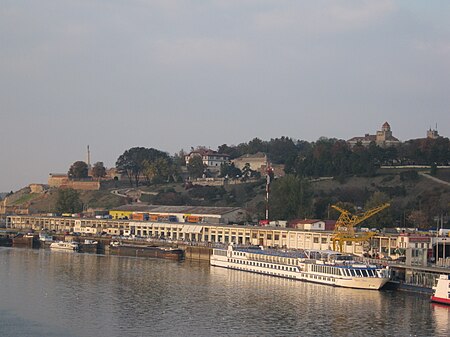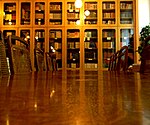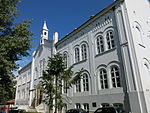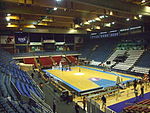Port of Belgrade
1961 establishments in Serbia2005 mergers and acquisitionsCompanies based in BelgradeGeography of BelgradePorts and harbours of Serbia ... and 4 more
Serbia geography stubsStari Grad, BelgradeTransport companies of SerbiaTransport in Belgrade

The Port of Belgrade (Serbian: Лука Београд) is a cargo and passenger port located on the Danube river in Belgrade, Serbia. The port is located in the center of Belgrade, near Pančevo Bridge. It also manages the passenger terminal on the nearby Sava river. The port transfer capacity is three million tons per year and 10,000 TEUs. It also has 300,000 square meters of warehouses and 650,000 square meters of open-air storage areas. The most common load goods are salt, sugar, concrete iron, paper, pipes and artificial fertilizers The port was privatized in 2005, in a process which raised issues of corruption which have not yet been settled.
Excerpt from the Wikipedia article Port of Belgrade (License: CC BY-SA 3.0, Authors, Images).Port of Belgrade
Дунавска, Palilula Urban Municipality Palilula
Geographical coordinates (GPS) Address Nearby Places Show on map
Geographical coordinates (GPS)
| Latitude | Longitude |
|---|---|
| N 44.825277777778 ° | E 20.478055555556 ° |
Address
Дунавска 49B
11060 Palilula Urban Municipality, Palilula
Central Serbia, Serbia
Open on Google Maps









